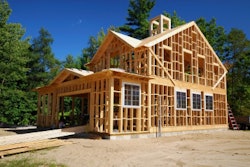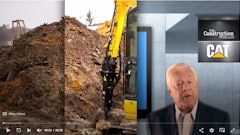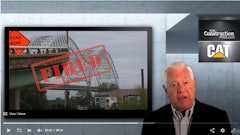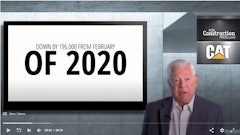Construction News Tracker is presented by Caterpillar and produced by ForConstructionPros.com.
Financial relief to the areas affected by Hurricane Florence was approved by the Congress. A $1.7 billion package in the form of grants to help rebuild housing and public works is in the disaster relief legislation, and lawmakers say it's only the first round of federal money to be considered by the House Appropriations Committee, as it's likely the southeast region will need plenty of money to recover from the flooding event that caused thousands to flee storm waters. Meanwhile, a host of state DOT workers, National Guardsmen and other federal personnel have pitched in to assess the damage and begin preliminary repairs.
Meanwhile, the Floriday panhandle is recovering following the massive cat 4 hurricane leaving in its wake a swath of devastation. Somewhere between $17 and $22 billion in initial damage estimates.
Tariffs will play a big role in the rebuilding efforts. North Carolina Home Builders Association President Alan Backs says everyone will pay the price in terms of higher construction costs. He points out that wood prices alone have shot up 40% over the last year after a 20% tariff was imposed on Canadian softwood lumber and supply shortages have increased. The 25% tariff on steel and 10% levy on aluminum are also being felt in the construction industry. With flooding causing the most damage as opposed to wind, insurers will pick up only a small portion of the rebuilding costs as only 335,000 thousand out of million of damaged properties are covered by the National Flood Insurance Program.
The Federal Transportation Department failed to make the funding cut at the cutoff date of October 1st. That means a continuing resolution takes effect until mid December for funds transmitted to states, and according to AASHTO states will only receive about two months worth of fiscal year 2910 dollars provided by the FAST Act. These short burst of money releases impede project planning and prevent states from accessing an additional 2.4% in FAST Act money for the coming year.
The National Association of Home Builders Wells Fargo Housing Market Index remained unchanged at a solid 67 reading in September. Builders continue to report firm demand for housing, despite rising affordability concerns as millennials enter the market. Materials and labor costs continue to affect builder costs. Forecasted rises in interest rates continue to play on the market, particularly so in the areas affected by the recent hurricanes.
The latest Associated Builders and Contractors Confidence Index shows contractors remained confidant over the second quarter of the year. More than three in four firms see sales rising over the next six months while three in five expect higher profit margins. Seven in 10 contractor firms expect to added to their staff size, although all admit to having to deal with the continued labor shortage. The ABC Confidence Index remains well above the diffusion level of 50, which indicates ongoing expansion in the industry.
Two hundred forty two grants have been awarded to 226 airports to fund 408 national infrastructure projects totaling $616 million. It's the fourth installment of the federal DOT funding program from the U.S. Department of Transportation. The projects include runways, taxiways, aprons, terminals, aircraft rescues and firefighting equipment, snow removal equipment and two firefighting training facilities.
It's only 32 years away, but in the world of skyscraper construction it's right around the corner. The latest report on what the environment will look like in 2050 is staggering. The prediction is for 6,800 skyscrapers per one billion people — up from the current rate of 800 per billion — and see the tallest rising by 50%.. Data mining by the Council on Tall Buildings indicates they’ve increased 8% annually since 1950. Carrying that percentage through to 2050 translates to 40,000 new skyscrapers over 3,700 feet high. Whew.
In closing, don't mind criticism. If it is untrue, disregard it. If it is unfair, keep from irritation. It if is ignorant, smile. If it is justified, learn from it
This is Construction News Tracker looking over the industry that makes the world a better place, presented by Caterpillar and produced by ForConstructionPros.com.
Follow us on social media at Twitter using #constructionnews,YouTube and Facebook as the streaming Web never ends.



















